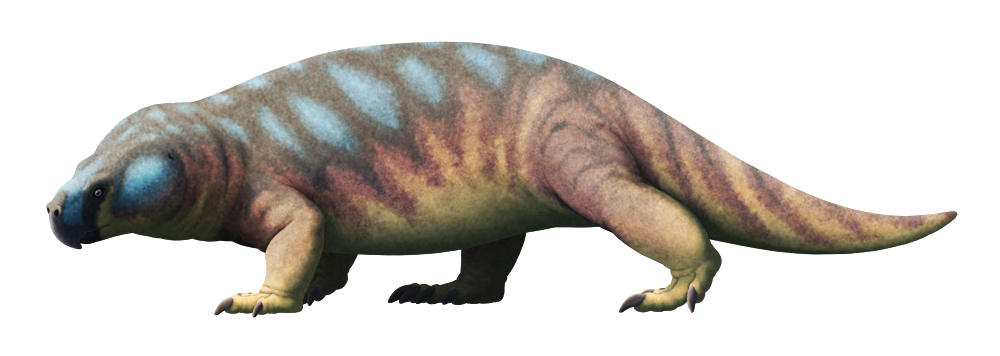Taking place during the 50-million year span between two huge mass extinctions, the Triassic was a very weird time. At the start of the period there was world domination by the synapsid Lystrosaurus, then after a few million years of recovery time came an evolutionary “explosion” from the rest of the survivors – filling new roles in their ecosystems and producing a brief but bizarre menagerie of unique species.
And one of the groups that rose to prominence during this time were the rhynchosaurs. Part of the archosauromorph branch of reptiles, they were closely related to the ancestors of crocodilians, pterosaurs, and dinosaurs, and evolved from small superficially lizard-like forms living in southern Africa during the very start of the Triassic, around 250 million years ago. But within just a few million years they became larger and bulkier, specialized for herbivory and scratch digging, and they soon spread all over Pangaea and became incredibly abundant in some fossil deposits.
Stenaulorhynchus stockleyi was one of larger member of this lineage, around 1.2m long (4’), known from Tanzania about 247-242 million years ago. It had a typical triangular rhynchosaurian skull, with wide deep cheeks supporting powerful jaw muscles and multiple rows of grinding teeth, along with a narrow hooked “beak” formed from the premaxillary bones of its snout.
Its unclear what the actual life appearance of the rhynchosaur “beak” was, with some reconstructions having a shrinkwrapped “alien mole-rat” look, others giving them keratinous parrot-like actual beaks, and still others going with fleshy tuatara-like lizard lips. In the past I’ve leaned somewhat towards the latter, but since one fossil does actually show some evidence for a keratinous covering I’ve gone for an extensive full beak this time around.

